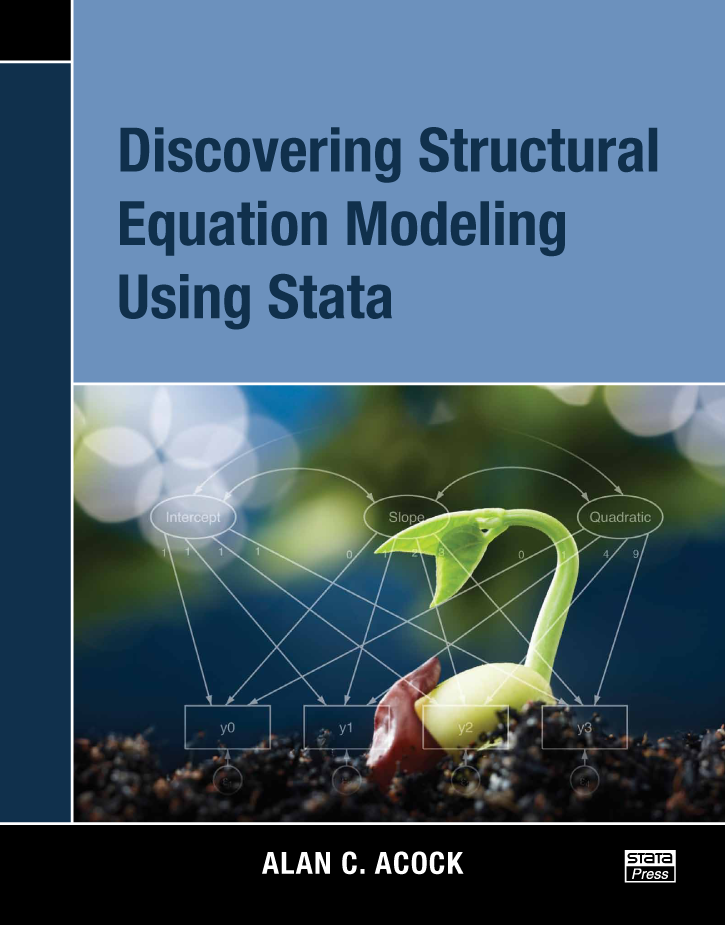
Discovering Structural Equation Modeling Using Stata |
||||||||||||||||||||||||||||||||||||
 Click to enlarge See the back cover |
eBook not available for this title
eBook not available for this title --> |
|
||||||||||||||||||||||||||||||||||
Comment from the Stata technical groupDiscovering Structural Equation Modeling Using Stata, by Alan Acock, successfully introduces both the statistical principles involved in structural equation modeling (SEM) and the use of Stata to fit these models. The book uses an application-based approach to teaching SEM. Acock demonstrates how to fit a wide variety of models that fall within the SEM framework and provides datasets that enable the reader to follow along with each example. As each type of model is discussed, concepts such as identification, handling of missing data, model evaluation, and interpretation are covered in detail. In Stata, structural equation models can be fit using the command language or the graphical user interface (GUI) for SEM, known as the SEM Builder. The book demonstrates both of these approaches. Throughout the text, the examples use the sem command. Each chapter also includes brief discussions on drawing the appropriate path diagram and performing estimation from within the SEM Builder. A more in-depth coverage of the SEM Builder is given in one of the book’s appendixes. The first two chapters introduce the building blocks of SEM. Chapter 1 begins with overviews of Cronbach’s alpha as a measure of reliability and of exploratory factor analysis. Then, building on these concepts, Acock demonstrates how to perform confirmatory factor analysis, discusses a variety of statistics available for assessing the fit of the model, and shows a more general measurement of reliability that is based on confirmatory factor analysis. Chapter 2 focuses on using SEM to perform path analysis. It includes examples of mediation, moderation, cross-lagged panel models, and nonrecursive models. Chapter 3 demonstrates how to combine the topics covered in the first two chapters to fit full structural equation models. The use of modification indices to guide model modification and computation of direct, indirect, and total effects for full structural equation models are also covered. Chapter 4 details the application of SEM to growth curve modeling. After introducing the basic linear latent growth curve model, Acock extends this to more complex cases such as the inclusion of quadratic terms, time-varying covariates, and time-invariant covariates. In chapter 5, Acock discusses testing for differences across groups in SEM. He introduces the specialized sem syntax for multiple-group models and discusses the intricacies of testing for group differences for the different types of models presented in the preceding chapters. Discovering Structural Equation Modeling Using Stata is an excellent resource both for those who are new to SEM and for those who are familiar with SEM but new to fitting these models in Stata. It is useful as a text for courses covering SEM as well as for researchers performing SEM. |
||||||||||||||||||||||||||||||||||||
Table of contentsView table of contents >> |
||||||||||||||||||||||||||||||||||||